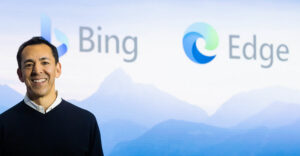
There are ways of achieving top rankings in Google, Yahoo, MSN, etc. that are kept secret.
In the following article you will learn how to take advantage of these tips and gain more traffic to your site than you could ever imagine. Here’s an easy-to-follow guide to achieving top search engine rankings.
1. Chose Your Keywords Carefully
Once you have chosen your business and purchased a domain name, the next step before submitting your site to search engines is to find useful and relevant keywords. Without this step your Web site will get lost in the millions of Web sites competing for your business.
To start our keyword research we need to utilize some very useful tools. The first Web site viewed should be Google Keywords, which is a free tool that displays the amount of searches and competition for specific keywords. It also allows you to find more specific keywords that can better describe your site.
A better tool would be to purchase some type of software such as Word Tracker, which offers detailed information about keywords. Unfortunately Word Tracker is not free, but there are other services that are.
2. Find a Niche Market
This cannot be stressed enough, as it is much harder to receive top search engine rankings for a new site than an established site. A new site will have to fight among Web sites that have established high search engine rankings.
You would be crazy to compete with these Web sites. You first need to find a niche market, and then build up your Web site to a position where it can compete with these generic terms.
For example, let’s say you have a Web site geared toward weight loss. You would not use the keyword “weight loss” because it has too much competition. You can use one of the keyword tools to find suggestions of related keywords that you will be able to compete against. You may find the keyword “weight loss surgery” or “weight loss techniques.” These phrases are much better keywords than generic terms like “weight loss.”
Use the list of a few keywords and check out the competition that word or phrase has on Google. Look at the number of competitors. If this exceeds a few million, then you need look for a more specific keyword. The next step is to observe the top listed pages and see how well they are optimized. You can download Google Toolbar and add Page Rank to your browser for free.
Here’s a quick definition of Google Page Rank. Page Rank is Google’s way of giving a specific value to how popular a Web site is. It is based on the number of “votes” other Web sites cast for another Web site. A “vote” is simply when another Web site places a link on their Web site that is pointing to another Web site.
Generally, the more “votes” or links you have pointing to your Web site, the higher your Page Rank (PR) will be. Page Rank is one of the many factors that Google takes into account when ranking Web sites.
In order to see your own Google Page Rank, as well as others, you must have the Google Toolbar installed on your computer. You can get that for free here.
A low Page Rank between 0 and 3 means that you can easily compete with these Web pages. A Web site with a Page Rank of 4 to 6 is a bit tougher to compete with, but is manageable using guided steps and expertise. You do not want to compete with Web sites that have a Page Rank above 7. Check the domain’s homepage, not a sub page, to get an accurate Page Rank.
3. View Competitors’ Source Code
It is important to view potential competitors’ source code to see if they have efficiently performed on page search engine optimization. To do this on your browser, click “view” and then click on the “source” option as displayed.
This will bring up a page with all the HTML (hypertext markup language) code on it. You do not need to be an expert with HTML to understand what we are looking for. We need to see if our competitor’s Web site is properly optimized. We look to see if they are using their keywords in the header tags <h1> KEYWORDS </h1>, the title tags <title> KEYWORDS </title>, and the image alt tags <alt> KEYWORDS </alt>. These should all be located near the top of the source code.
If you cannot find these, then go to the toolbar and chose “edit,” select “find” and type in <h1> or <title>, etc., to see if there are being used for the keywords. If these do not exist or are not being used to hold keywords, you have found an easily beaten page. This means that with some proper optimization, you will be able to outrank this page. The last thing you want to look at is the body content to see if the keyword is used a few times there. A site lacking in keywords in the body context is a poorly optimized page. You should always make sure your Web page is keyword-rich with relevant content.
4. Keyword Placement
After you have selected a few keywords to use, we want to combine the ones that have like terms. For example, suppose you have selected three keywords:
- Weight loss story;
- Weight loss picture;
- Safe weight loss
As you can see that all three keywords contain the words “weight loss;” therefore, we can combine the words to better optimize your page.
For the title tag, the fewer the keywords used, the better the search engines will rank your page.
When we create the page it should NEVER be:<title>Welcome to our website!</title>
It should also NEVER look like this:<title>weight loss story and weight loss picture and safe weight loss</title>
The way it should look is:<title>Weight Loss Story | Safe Weight Loss Picture</title>
(Note: You can add this character “|” by holding the shift key on your keyboard and pressing the backslash key above the enter key.)
You should always remove prepositions such as “and,” as this will only hurt your search engine optimization. The fewer, more relevant the words there are, the higher your search engine ranking will be.
Header tags <h1> should be placed above your body content. This should contain your most relevant keyword in this tag. Example: <h1>Weight Loss Story</h1>This main keyword placed in the <h1> tag will substantially increase your page ranking.
The <h2> tag should contain your second most important keyword. The <h3> tag will have your least important keyword placed in it. These header tags are often overlooked, but they make a significant difference in your on page search engine optimization.
The body content of your Web page should be rich with keywords and relevant content. You should have each keyword appear at least once for every 1 to 2 paragraphs. Do not stuff your body with keywords, as this will only hurt you. You want to give your body a clean, natural look, meaning do not overuse or underuse keywords.
Image tags <alt> should also be keyword-rich. Search engines often look at the alt tags of images on your Web site to get a feel of what your Web site is about. If the alt tags do not have your keywords, then you will be ranked lower than if you had keywords in your alt tags.
5. Homepage Organization
We want the search engines to notice your keywords and index you according to those keywords. In order to do this, you should start your body and end your body with your keywords. This gives the search engine spider information that your page is highly relevant to your keywords.
When the spider looks through your Web site, it reads through your content from top left to bottom right. Below is an example of how the search engine reads your page starting with 1, then 2, then 3.
Rather than creating a table that looks like this:
You should create a table that looks like this:
Now search engines will view your body content before it views your navigational menu. The search engine will see the top of your page then see a blank area and skip to your body content then move onto your navigational menu.
Brandon Leibowitz is president of SEO Optimizers, a provider of Internet marketing services specializing in search engine optimization.




















































Social Media
See all Social Media